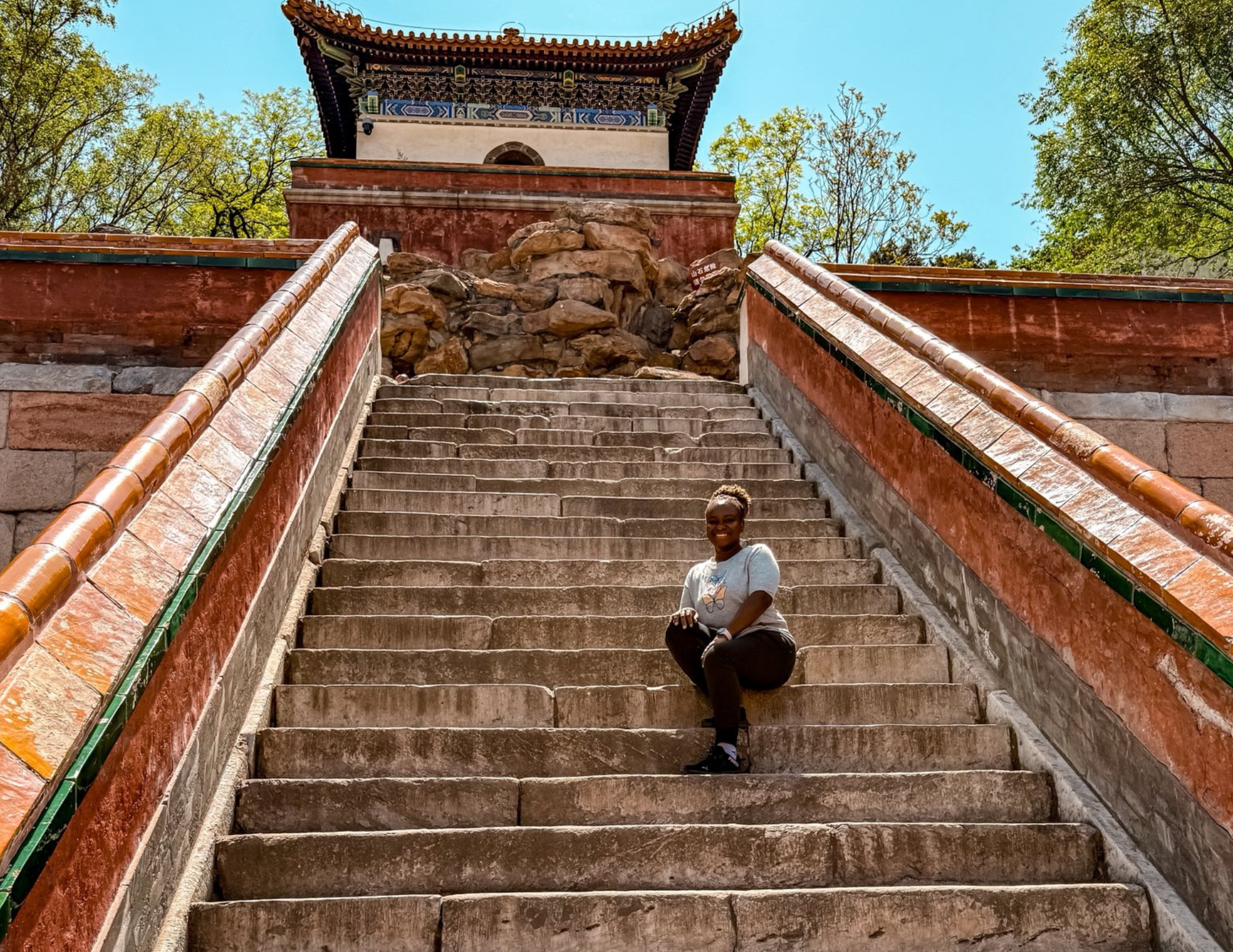We opened Beijing with the Summer Palace (颐和园 / Yíhéyuán), and it set the tone: cypress shade, painted pavilions, a sweep of water big enough to steal your whole afternoon. It’s the kind of place that proves China can do quiet grandeur, imperial halls tucked into a hillside, a lake that mirrors the sky, and miles of walkway where stories are painted beam by beam. UNESCO calls it a masterpiece of Chinese landscape-garden design, and you feel that the minute you step through the gate.

Quick orientation (so the map makes sense)
The palace grounds cover about 290 hectares (roughly 720 acres), three-quarters water, dominated by Kunming Lakeand Longevity Hill. There are six gates, but most travelers use three: East Palace Gate (main/easiest for first-timers), North Palace Gate/Beigongmen (great if you want to start high and walk down), and New Palace Gate (near the Seventeen-Arch Bridge).

Getting there (subway is your friend)
- For the North Palace Gate (Beigongmen): take Metro Line 4 to Beigongmen, Exit D, then a short walk to the gate, perfect if you want to start near Suzhou Street and climb up.
- For the East Palace Gate: take Line 4 or 16 to Xiyuan, Exit C2, then walk ~10 minutes west to the main gate. Buses also stop at Yiheyuan (颐和园) if you’re above ground.
Tip: Enter North and exit East if you like a one-way, mostly-downhill route with a finale at the lake.

Tickets, hours & what’s included
There are two ticket types: park admission and an optional joint (through) ticket that adds select interior sights (like Dehe Garden, Wenchang Gallery, Tower of the Fragrance of the Buddha/Foxiang Pavilion, and Suzhou Street).
- Admission: CNY 30 (Apr–Oct), CNY 20 (Nov–Mar)
- Joint ticket: CNY 60 (Apr–Oct), CNY 50 (Nov–Mar)
- Core park hours: roughly 06:00–20:00 in high season; 06:30–19:00 in low season. (Inner sights open later and close earlier.)

You can buy on site or book online via the official website/WeChat account; Beijing’s government guide lists both and posts seasonal hours. Some travelers report online sales opening 7 days in advance, handy on busy weekends.
On-site guide desks (East, North, and New Palace gates) offer multi-language services and audio guides if you want context as you walk.

When to go (and how long to stay)
Give it 3–4 hours unhurried. September–October is peak pretty (gold leaves, clear air), spring is soft and floral, summer is hot but lush (lotus on the lake), and winter can mean snow-dusted roofs, and sometimes a frozen lake.
Go early (right at opening) or late afternoon to dodge the tour waves. Avoid national holidays if you can.

What to see (and why it’s special)
- Long Corridor (长廊): ~700 meters of covered walkway painted with thousands of folk-tale scenes, beautiful and practical when it rains or bakes.
- Tower of the Fragrance of the Buddha (佛香阁): the octagonal landmark perched on Longevity Hill, about 41 mhigh, with views that explain why emperors summered here. (Included on the joint ticket.)
- Marble Boat / Clear and Peaceful Boat (清晏舫): a stone pavilion shaped like a boat; photogenic near sunset.

- Seventeen-Arch Bridge (十七孔桥): the elegant span to South Lake Island; look for the hundreds of carved stone lions along the railings.
- Administrative & residential quarters: Hall of Benevolence and Longevity (where state business was handled), Halls of Jade Ripples & Joyful Longevity, these tie the scenery back to court life.
- Suzhou Street: a staged water-town “market” where the court played at shopping; pretty and fun with kids. (Joint ticket/extra fee).
Boat notes: In season, small boats and ferries run on Kunming Lake, great for crossing to South Lake Island or just changing the vibe between sights.

A route that flows (no backtracking)
Enter North Palace Gate → Suzhou Street → climb Longevity Hill to the Tower of the Fragrance of the Buddha → descend through the temple courts to the Long Corridor → Marble Boat → boat or lakeside walk to South Lake Island → Seventeen-Arch Bridge → stroll the East Causeway → administrative halls → exit East Palace Gate. It’s classic for a reason and keeps most of the climbing up front.

Practical tips (learned on the path)
- Shoes first. Distances add up; the site is vast. Shade and benches help, but comfy shoes make the day.
- Stairs are real. If steep climbs aren’t your jam, enjoy lakeside paths and interior halls and skip the upper terraces.
- Food/coffee: Small kiosks and cafes exist inside; options expand just outside the East and New Palace gates.
- Photos: Best light hits the Seventeen-Arch Bridge late day; morning is magic along the Long Corridor.
- With kids: The “market” on Suzhou Street and boat rides break up the walking; carry a little cash + mobile payments.

Why the Summer Palace matters
Beyond the postcard views, this is one of China’s best-preserved imperial gardens, restored after the 19th-century wars and opened to the public in 1924. It blends architecture, water engineering, and landscape, imperial power softened by pleasure gardens, and it’s been under UNESCO protection since 1998.

Accessibility & services
Paths are mostly paved; lakeside routes work well for strollers and wheelchairs, though hillside shrines involve stairs. Guide services and audio guides are available at the main gates; signage is bilingual.

Getting out & pairing your day
If you started at Beigongmen (North) and end at East/New Palace Gate, you’re perfectly placed to hop the subway back on Line 4/16 at Xiyuan or grab a cab/DiDi. Pair the morning here with a late-afternoon Jingshan Park view over the Forbidden City on a second day, rather than cramming both, Summer Palace deserves its own breath.

